If you follow Hideki Kamiya on Twitter, you might expect him to be an excitable, fast-talking conversationalist in person. He’s pretty much the opposite. In fact, when he sat down for an interview at PAX last week, the man responsible for beloved action games Devil May Cry, Viewtiful Joe and Bayonetta barely even raised his voice.
He may be known for being an occasionally vulgar, rapid-fire personality on the short-form social network but the Japanese game designer proved to be thoughtful and measured in person. Kamiya was PAX to talk about The Wonderful 101, the upcoming action-strategy hybrid coming to the Wii U on September 15. In his talk with Kotaku, the game designer talked about his inspirations for that title and why he’s so active on Twitter. He also wanted to know what I thought about him. Keep reading to find out.
Kotaku: The Wonderful 101 seems like a different kind of game than what Platinum has done before. You guys are known for lots of action and over-the-top combat action sequences. Wonderful 101 looks like it has some of those elements but it also has players managing units of a big cast of characters. Was there a lot of thought given to making such a shift?
Kamiya: I would probably consider myself not really the type to really think and focus hard on the [planning] strategy [first] in [making] the gameplay. With coming up with a design for a game, I would say it’s not necessarily logically planning out how things work. But, as we’re going through the steps of making the game, the game elements come organically out of that process.
Kotaku: Wonderful 101 isn’t like Bayonetta or Metal Gear Rising or Viewtiful Joe, where you have one central character that the player focuses on. How do you make all of these characters feel cool when you’re fighting a big creature or something like that?
Kamiya: There is this inherent coolness in this idea of superheroes coming together to fight. It’s a major theme in this game. If they were cuter or more adorable characters or something, obviously that wouldn’t work. But personally, these kind of superheroes are something I have an affinity with, and the scenario with the aliens as enemies is sort of a typical orthodox scenario which breeds this familiarity for players with this action scenario.
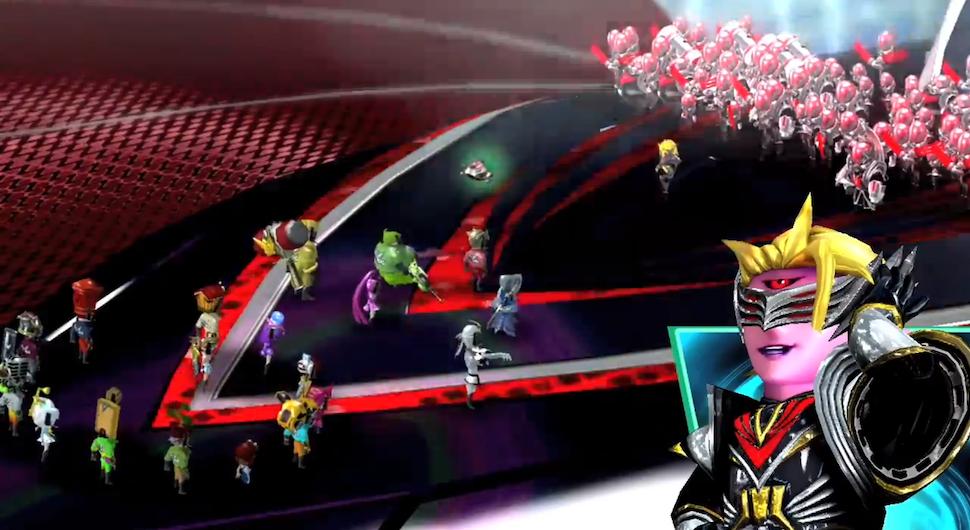
When it comes to actually fighting with these aliens, I think with the way that the game is set up [by controlling multiple characters and combining their abilities] the coolness of the action definitely comes through.
Kotaku: You talk about the superheroes and the idea of them coming together. The game itself seems like a fusion of American geek and Japanese otaku cultures coming together. Can you talk about what the origins of the project were? What was the inspiration to make a game in this way?
Kamiya: First, I was tasked by Mr. Minami, head of Platinum Games, to come up with a game idea, sort of an all-star cast of Nintendo characters or some other popular characters, and coming up with an idea and taking advantage of those.
In that process, I was thinking, “Well, how do I please the fans of all these characters? How do you cater to everybody who has very particular interests in all these different characters?” That’s when I came up with the idea of just throwing up all the characters at the same time on the screen, and from that the idea came of controlling all of them at the same time.
That was the base of the launching point for the rest of the game. In talking with Nintendo, the project was put on hold for a while and I came back to it a year later and thought, “This is an idea that I really want to try.” I thought, “Well, superheroes is a good theme and seems fitting.”
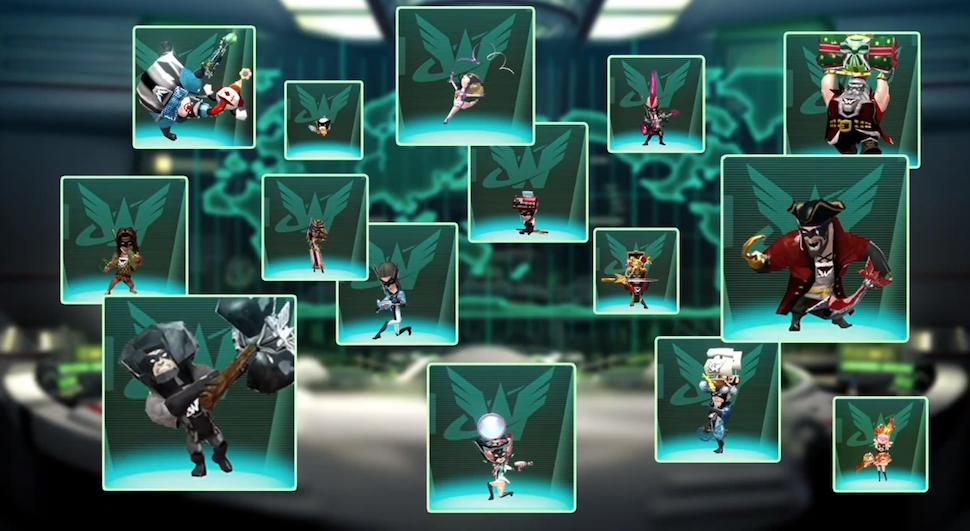
In trying to think of some of the original characters, the Power Ranger-style design and aesthetic is something that I’m very fond of. That’s how we ended up with that look.
Kotaku: What is Platinum trying to accomplish with video game design as a medium? It seems like they’re focused on enjoyable action-heavy sequences with over-the-top stories. Is there a sensibility that ties all of the creators at Platinum together?
Kamiya: That’s an interesting question. I don’t think there’s this common thread throughout the company that we will absolutely make action games, or something that is a common philosophy in the company that says, “Let’s make, for example, this particular game.”
Personally, my goal in the forefront is I want to make gamers happy with my games. Of course, it depends a lot on the project but I think one thing that really runs through the blood of the company and all the staff is putting quality as the number one priority.
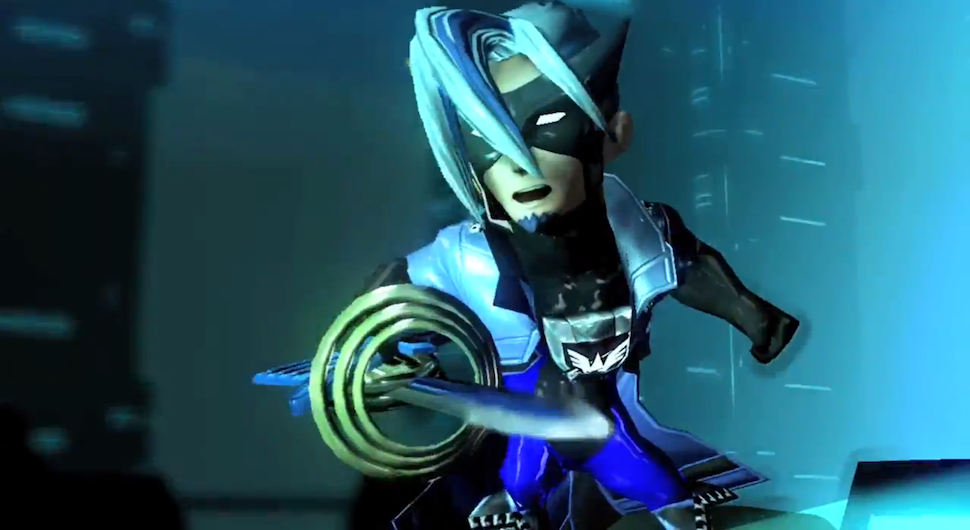
Kotaku: You’re very vocal on Twitter. I think it’s weird how video game creators then not to speak out a lot. We don’t get to hear how they feel about the fans, the games and the way that people write about them. What do you personally get out of using Twitter like this and connecting with people?
Kamiya: It’s really less about me and what kind of merits there are for me personally. What I really want is for users to see the perspective of game creators. And, in regard to the games, [I want] users not to just play and be done with the game, but to play the game and understand the context of where it came from, and give perspectives on games that, “It doesn’t just come like a product out of a company; it comes from a human.”
Twitter is a great opportunity to have that avenue to communicate and express myself as a human and provide that for fans. When I was young, there was a very impactful magazine section that featured game designers. There was a column in a magazine featuring game designers like Shigeru Miyamoto, and Masanobu Endō. It was sort of a revelation to see, “Wow, there is such a profession. There is such a thing.”
Kamiya: ” [A game] doesn’t just come like a product out of a company; it comes from a human.”
That was an inspiration, a driving force behind me saying, “I want to do that, too, and I want to be able to make games like these great designers.” Currently, I think [being on Twitter] is a really good source of inspiration for people who have aspirations to grow up and make games for users to even see that there are game designers behind the scenes.
In regard to my activity on Twitter, it may come off [like I’m] this individual really, really shooting from the hip. But I do have a very strong policy as to the way I communicate on Twitter. A lot of that lies behind me really wanting users to judge things for themselves, to actually play a game and decide if something is good or bad based on that. If they have questions about something in the game, my policy is to not make excuses for it. I’ll answer questions but I definitely don’t want to make excuses. My goal on Twitter is for the users to be able to get to know me.
Kotaku: You were upset at Kotaku because of an article that ran a couple of months ago. I want to know how you are feeling about us now, and how you generally feel about your personality being something that people write about? Not just what you create but also your personality.
Kamiya: In regard to that, if it’s interesting for gamers then I think to a certain degree it’s all in good fun. I understand it can pick up steam and become a bigger topic because of activity on Twitter. But, personally, I do wonder sometimes what all the fuss is about.
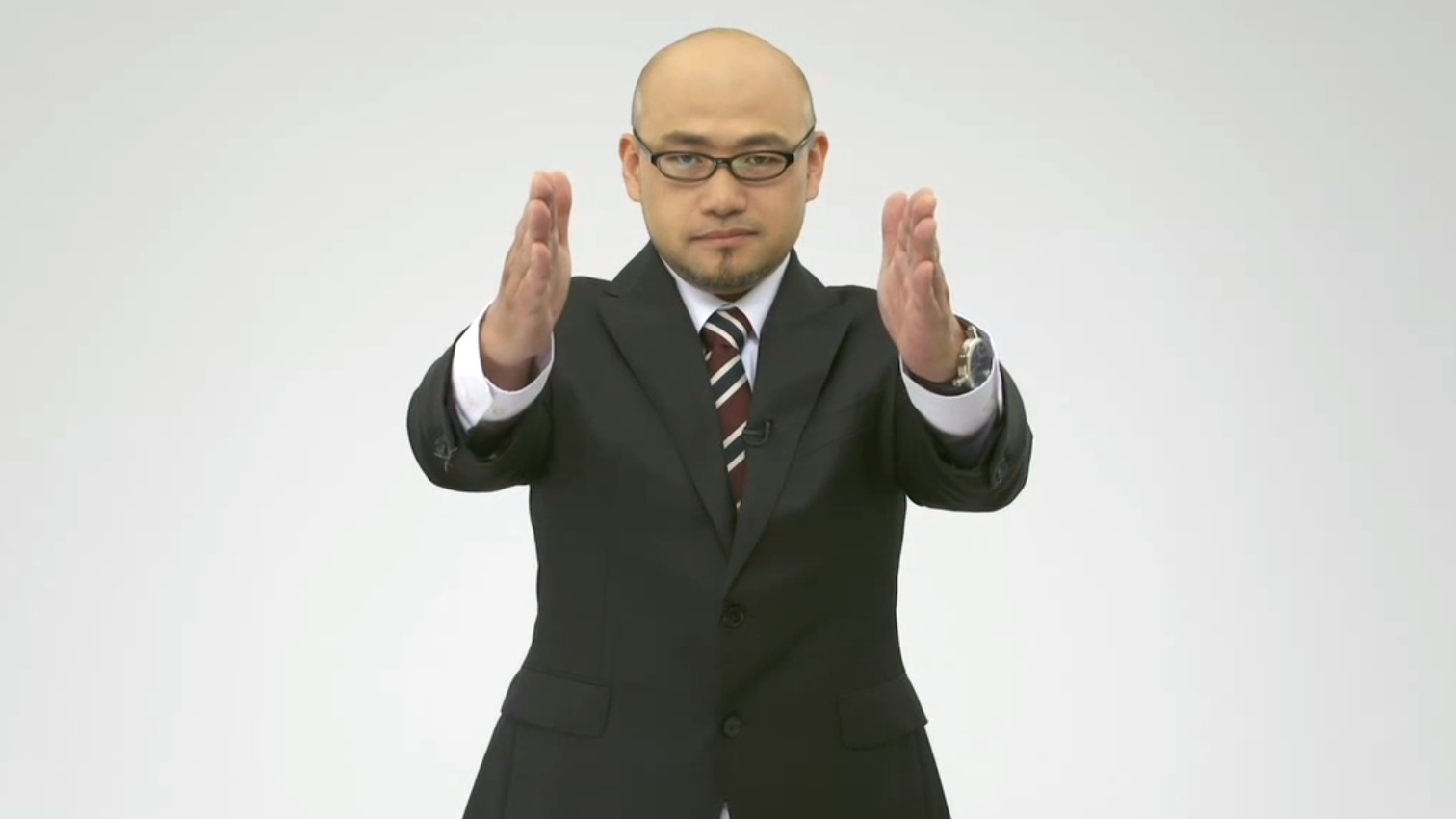
Kotaku: In the Nintendo Direct about The Wonderful 101, it seems like you’re having a little bit of fun dressing up in a suit like Mr. Iwata. Did that costume reflect a different side of you that we don’t see on Twitter?
Kamiya: No. That was just setting up the theme of impersonating Mr. Iwata, wearing a suit and talking like him. I think, however, if you actually meet me, you’ll discover that my personality is a little bit different than maybe your expectation was based on Twitter.
Kotaku: What is the difference?
Kamiya: Between Twitter and real life?
Kotaku: Yeah.
Kamiya: I want to ask you.
Kotaku: You are a lot more thoughtful in person. You were taking a long time to consider and answer the questions. It seems maybe like you’re not saying the first thing that pops into your head. Whereas on Twitter it seems like more of an immediate reaction, a quick reaction to answer people. It also seems like a little bit compulsive, like you have to answer as many as possible.
Kamiya: This is part of my job. It’s important to take it very seriously. But with interactions on Twitter with gamers and users, I like to think of it as if I’m talking to friends, or if we’re all sitting around at a bar sharing good times.
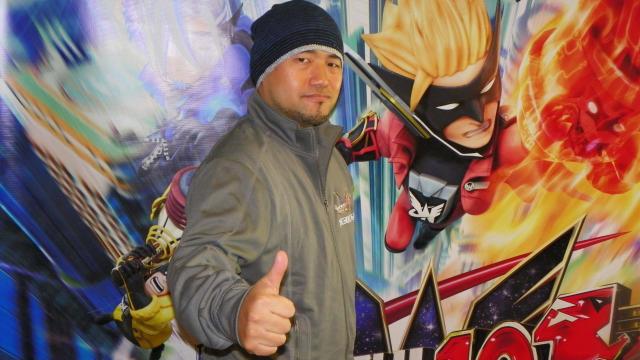
Comments
9 responses to “This Man Almost Made A Game Filled With Nintendo All-Stars”
Let’s not forget about Resident Evil and Okami.
The man is a genius.
I do think the focus on his personality and his twitter in this interview is silly though. Limit that to one question next time, yeah? Otherwise we’re looking for unnecessary drama and bullshit that doesn’t need to be there, especially with a man like Hideki.
He already got enough bullshit from Capcom.
The guy is gaming royalty. Maybe not King Miyamoto, but at least a duke or something.
ASKjhsdflihsdihujaerfdsf with the bit.ly links.
Came here to say that Wonderful 101 is AMAZING.
If you have a Wii U, buy it.
If you don’t have a Wii U, Wonderful 101 + Pikmin 3 + Nintendo Land + ZombiU + Wind Waker HD (next month) makes buying one (finally) worthwhile.
Swap out Wind Waker HD for Rayman Legends, but close enough 😛
How about just add it on top. 😛
Got Wonderful 101 yesterday and it feels like something’s lacking.
Your sense of wonder?
It changes and improves as the game goes on – though I’m not saying it’s bad to begin with, it just gets better. And by “better,” I mean, “more ridiculously over-the-top parody.”